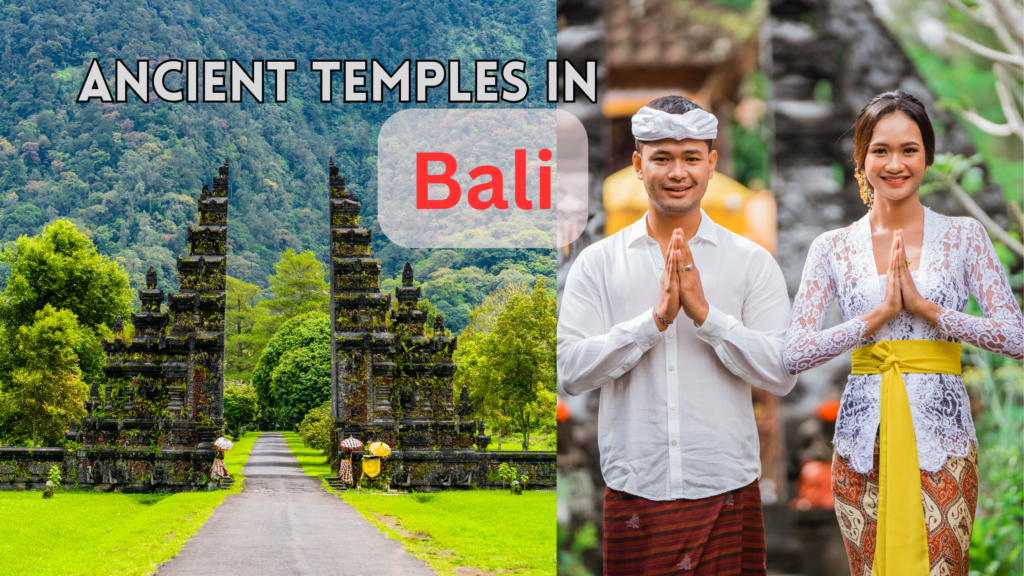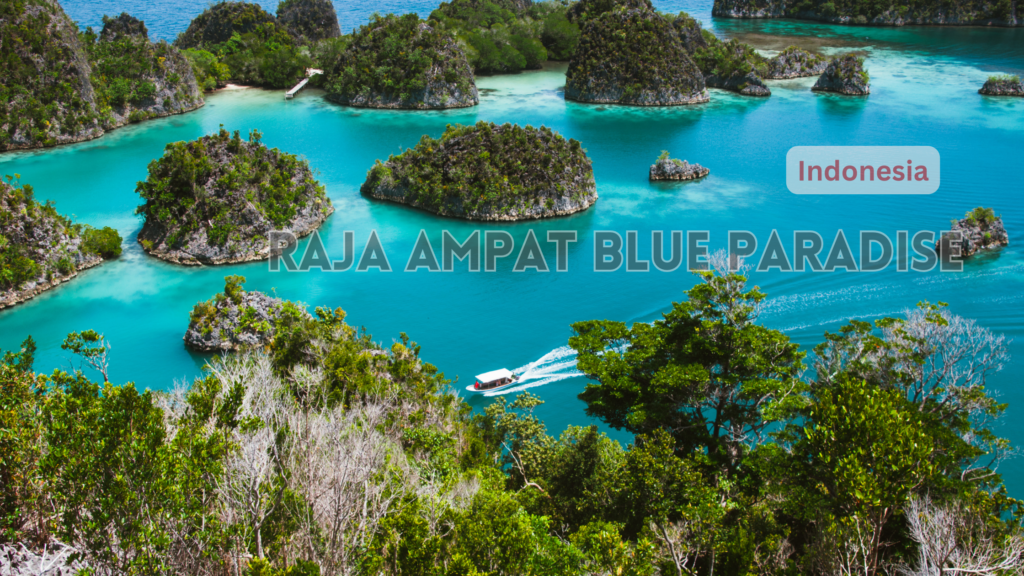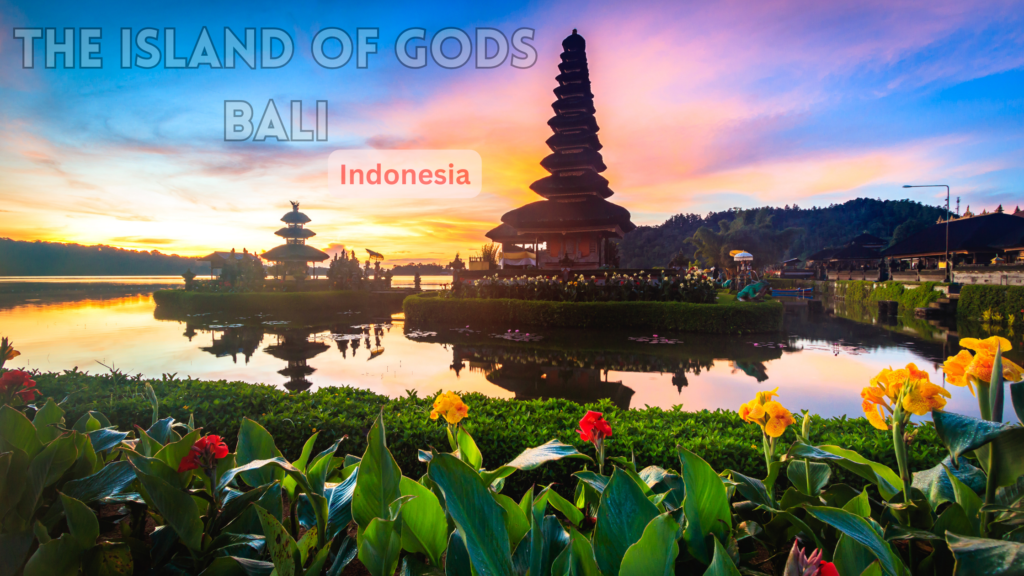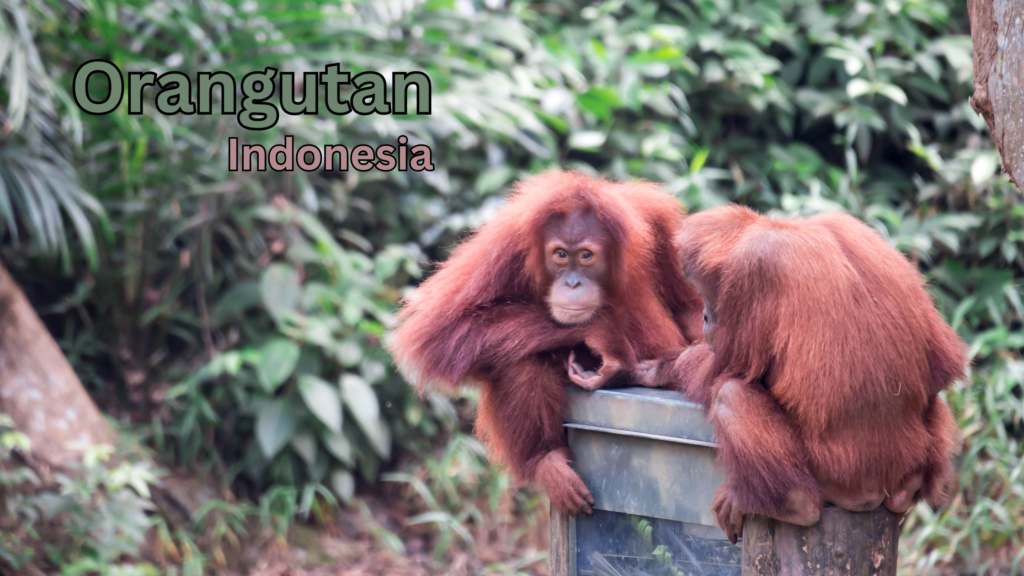Why Indonesia?
Indonesia is an archipelagic wonderland of magnificent scenery, hospitable people, and a diversity of cultures. Indonesia is a land of many experiences, from the colourful streets of Jakarta to the serene beaches of Bali and the historic treasures of Borobudur. Explore the fascinating customs, delectable cuisine, and breathtaking scenery that make Indonesia a fascinating travel destination by travelling with me. Together, we can explore this fascinating nation’s heart and spirit by taking a virtual tour.

A brief overview of Indonesia:
The vast Southeast Asian archipelago of Indonesia enthrals with its abundant natural and cultural variety. It has more than 17,000 islands and is home to dynamic volcanoes, colourful coral reefs, and verdant jungles. The diverse nationalities, languages, and religions that make up the nation’s fabric are woven together harmoniously. Indonesia provides a tapestry of experiences that blend history, modernity, and the allure of its breathtaking landscapes, from the busy metropolis of Jakarta to the tranquil beaches of Bali and the ancient temples of Borobudur.
Geography and landscapes of Indonesia:

With a wide variety of scenery spread over its enormous archipelago, Indonesia’s topography is a breathtaking mosaic:
1. The Beauty of the Archipelago:
With its vast archipelago of over 17,000 islands, Indonesia is the world’s largest, with each island having its own distinct beauty.
2. Majesty of the Volcano:
About 130 active volcanoes may be found in the nation, producing magnificent scenery and rich soils. Distinguished instances are Mount Rinjani and Mount Bromo.
3. Rainforests on Tropical Scale:
Enormous rainforests envelop numerous islands, preserving an abundance of diverse flora and animals, including the critically endangered Bornean Orangutans.
4.The stunning beaches of Indonesia:
ranging from the secluded coasts of Raja Ampat to the white sands of Bali, are well-known for their natural beauty and a wide variety of marine life.
5.Coral Reefs:
The Indonesian region known as the Coral Triangle is a haven for snorkelers and divers and is recognised as the world’s epicentre for marine biodiversity.
6. Terraced Rice Fields:
Stunning scenes of terraced rice fields, like those found in Java and Bali, highlight the sophisticated farming methods used by the natives.
7.Equatorial Climate:
Indonesia has an equatorial climate, which means that it has constant temperatures all year round. The tropical environment is ideal for luxuriant vegetation to thrive.
Due in part to its diverse topography, Indonesia is a popular destination for travellers interested in the outdoors, thrill seekers, and anybody wishing to catch a glimpse of the world’s most breathtaking scenery.
Cultural tapestry of Indonesia:

The rich and complex tangle of traditions, practices, and many influences that makes up Indonesia’s cultural fabric. With more than 300 ethnic groups and 700 languages spoken there, the country welcomes a peaceful blending of cultures. This intricate tapestry is enhanced by the distinct flavours of each island:
1. Traditional Arts:

The elaborate Batik designs and the Wayang Kulit shadow puppets are examples of the creativity and skill that have been passed down through the years in traditional arts.
2. Original Events and Festivals:
exuberant festivals and ceremonies abound throughout Indonesia, including the complex Hindu rituals in Bali and the exuberant Ramadan celebrations.
3. Local Music and Dance:
Traditional dance styles, Kecak dance, and gamelan music all convey the nation’s creative and spiritual expressions, each with subtle regional differences.
4. Delicious Foods:
Indonesian food is a savoury culinary adventure, featuring a variety of dishes such as rendang, satay, and nasi goreng that showcase the nation’s rich cultural diversity.
5. Religious Tolerance:
Although Islam is the most common religion in Indonesia, it coexists peacefully alongside Buddhism, Confucianism, Christianity, and Hinduism. Indonesia embraces religious variety.
6. Textiles & Batik:
A cultural icon, batik painting creates elaborate patterns on cloth, and each region has its own unique textile symbolism and style.
7. Building Design:
Indonesian architecture is shaped by both traditional and colonial elements; this can be observed in both modern buildings in places like Jakarta and old temples like Borobudur.
8. Spirit of Community:
Deeply rooted is the idea of Gotong Royong, or community collaboration, which symbolises a group mentality and mutual assistance.
The cultural tapestry of Indonesia is more than just a show; it’s an immersive experience that lets tourists sense the pulse of a country where modernity and tradition coexist peacefully.
Historical significance of Indonesia:
A. Historical Empires and Kingdoms:
1. Majapahit Empire:
Take in the splendour of this once-powerful monarchy that dominated a sizable portion of the archipelago.
2. Srivijaya Kingdom:
Learn about the cultural diversity and maritime significance of this historical powerhouse of Southeast Asia.
B. The Battle for Independence and the Colonial Era:
1. Dutch Colonialism:
Explore Indonesia’s Dutch colonial history and consider the effects it had on the country’s culture, economy, and nationalist movement.
2. The Struggle for Independence:
Follow the valiant struggle for Indonesia’s independence, spearheaded by leaders such as Sukarno and Hatta, which resulted in the declaration of independence in 1945.
What are the major religions practiced in Indonesia?
The religious diversity of Indonesia is well-known. The following are the main religions practiced in the nation:
1. Islam:
The majority of Indonesians identify as Muslims, making it the country’s most practiced religion. Indonesia adheres to a moderate brand of Islam that is shaped by regional customs.
2. The Christian Faith:
With sizable Protestant and Catholic groups, Christianity is the second most popular religion in Indonesia. In places like East Nusa Tenggara and North Sulawesi, it is common.
3. Hinduism:
The majority population of Bali is Hindu, and there are also sizable Hindu populations in certain regions of Java, Lombok, and Kalimantan.
4. Buddhism:
Although there are less Buddhists in Indonesia than adhere to other religions, Buddhism is nevertheless historically and culturally significant. It is very common in Sumatra and Java.
5. Confucian philosophy:
Confucianism is one of the official religions of Indonesia, albeit it is not as popular, and there are communities that follow it.
The nation’s constitution, which promotes the peaceful coexistence of many faiths and beliefs, is a testament to its commitment to religious tolerance.
Is Indonesia a muslim country?
More than 87% of Indonesians identified as Muslims in 2022, with 7.43% identifying as Christians. Indonesia is frequently acknowledged as a Muslim country because it boasts the world’s largest Islamic population. However, Indonesia’s constitution states that it is not a Muslim country.
What about Indonesia’s weather?

All year round, Indonesia enjoys warm temperatures due to its tropical climate. Important aspects of the weather in Indonesia include:
1. Excessive Heat:
With average high temperatures of between 77°F and 95°F (25°C and 35°C), Indonesia is a warm vacation.
2. Summertime and Wintertime:
There are distinct rainy and dry seasons in the nation. Heavy rainfall is usually experienced during the rainy season, which runs from November to March, while the dry season, which lasts from April to October, brings higher temperatures and less precipitation.
3. Humidity:
Indonesia frequently has high humidity, particularly in the rainy season, which adds to the country’s lush and tropical atmosphere.
4. Monsoons:
The timing and intensity of rainfall are impacted by monsoons in some areas. For instance, the monsoon patterns in Sumatra and Java differ from those in Bali and the eastern islands.
5. Risk of Typhoon:
Typhoons and tropical cyclones are common in the area where Indonesia is situated. During the typhoon season, some locations may have severe gusts and heavy rains, however not all regions are impacted.
Because of its enormous size and varied topography, it is recommended to take regional variances into account while making travel plans to Indonesia. Verifying the climate of the area you intend to visit in advance might assist guarantee a relaxing and pleasurable vacation.
What is currency of Indonesia?
The Indonesian Rupiah, or IDR, is the country’s official currency. It is extensively used for all financial transactions within the nation and is represented by the sign “Rp“. Businesses and the banking system in Indonesia mostly use Indonesian Rupiah.
What is Indonesia main language?
Bahasa Indonesia is the official language of Indonesia. Spoken throughout the archipelago, it serves as the national language. With over 700 spoken languages and dialects, the nation is linguistically diverse, yet Bahasa Indonesia unites the country and is utilised in government, education, and interethnic communication.
Why should you absolutely visit Indonesia?
Because of its captivating fusion of natural beauty, cultural diversity, and exciting adventures, Indonesia is a destination that just must be seen. Every area of this archipelagic jewel tells a different tale, from the captivating undersea world of Raja Ampat to the green rice terraces of Bali. Enjoy the delicious flavours of Indonesian food, lose yourself in the warmth of other cultures, and go on exciting adventures, like surfing in Bali or seeing Komodo dragons. Indonesia is a patchwork of experiences that offers not only travel but also profoundly moving experiences. It’s a place where the kindness of the locals and the stunning scenery make for experiences that last long after you leave.
What to do in Indonesia?

There are countless options available in Indonesia, which provides a wide variety of activities for all kinds of tourists. Here are some activities to enjoy while visiting this alluring location:
1. Discover the Temples of Bali

Explore well-known temples like as Tanah Lot and Uluwatu in Bali, or the historic sites of Borobudur and Prambanan in Java.
2. Unwind on Gorgeous Beaches:
Take a break on the pink sands of Komodo Island, the white sands of Bali’s Kuta Beach, or the isolated beaches of Gili Islands.
3. Dive into Raja Ampat:

Take a dive into Raja Ampat, an underwater wonderland renowned for its unrivalled marine richness and immaculate coral reefs.
4. Trail Mount Bromo:

See the sunrise over the surreal surroundings of Java’s Mount Bromo, an active volcano encircled by a sand sea.
5. Meet Komodo Dragons:

Travel to Komodo Island to witness the largest reptiles in the world, the Komodo dragons, in their native environment.
6. Explore Cultural Performances:
To get a taste of Indonesian culture, take in Wayang Kulit shadow puppet displays, traditional Balinese dance performances, or local festivities.
7. Indulge in Gastronomic Journeys:
Savour regional specialties like nasi goreng, rendang, satay, and soto as you immerse yourself in the vibrant flavours of Indonesian cuisine.
8. Bali surf:
World-famous surf locations like Uluwatu and Padang Padang draw surfers from all over the world to Bali, a surfer’s paradise.
9. Trek in Sumatra:
Take on strenuous hikes like the one to Gunung Leuser National Park, or explore the region’s jungles, which are home to a variety of species, including Orangutans.
10. Island-hopping:
Take advantage of the more than 17,000 islands by embarking on island-hopping excursions and exploring the distinct charms of each location.
These excursions barely touch the surface of what Indonesia has to offer, guaranteeing each visitor an amazing time.
Why should you absolutely visit Indonesia?
Indonesia is a very desirable travel location for a number of reasons:
1. Breathtaking Sceneries:
Unmatched natural beauty can be found in Indonesia’s varied landscapes, which range from magnificent beaches and verdant jungles to majestic volcanoes.
2. Cultural Richness:
Take in the warmth of Indonesian hospitality as you immerse yourself in a tapestry of cultures, customs, and artwork.
3. Unique Wildlife:
See endangered animals in their native environments, such as Komodo dragons, Orangutans, and colourful marine life.
4. Excellent Diving:
Discover some of the world’s top diving locations, with colourful coral reefs and a variety of marine ecosystems, in locations like Raja Ampat and Komodo.
5. Delicious Cuisine:
Savour a variety of mouthwatering cuisines, from rich traditional meals to fragrant street food, as you embark on a culinary adventure.
6. Architectural and Historical Wonders:

Explore historic temples that showcase Indonesia’s magnificent architecture and rich history, such as Borobudur and Prambanan.
7. Opportunities for Adventure:
Indonesia offers exhilarating experiences for all kinds of travellers, whether they are surfing in Bali, climbing in Sumatra, or visiting isolated islands.
8. Island-Roaming:
Indonesia offers countless chances for island hopping, with each location having its own distinct appeal.
9. Warm Climate:
Take pleasure in a year-round tropical paradise with reliably warm temperatures.
10. Affordability:
Indonesia frequently offers great value for the money, so you can explore its beauties without going over budget.
In conclusion, Indonesia is a location that genuinely has something for everyone, beckoning with a blend of natural beauty, cultural diversity, and adventure.
Island of the Gods: BALI

Bali: With its alluring beauty that goes beyond the ordinary, Bali, tucked away in the centre of Indonesia, beckons. Bali, also referred to as the “Island of Gods” is a mesmerising combination of natural scenery, colourful customs, and a kind demeanour that permeates the island. Every section of this tropical paradise, from the vibrant beaches of Kuta to the serene, spiritual Ubud, unveils a different aspect.
The Enchanted Island
1. Ubud – Cultural Heart:
Take in the local customs, discover the Sacred Monkey Forest, and peruse lively marketplaces in this centre of culture.
2. Kuta Beach:
Lively Coastal Scene, Take in the vibrant atmosphere, indulge in water sports, and take in breathtaking sunsets at the well-known Kuta Beach.
3. Seminyak:
Trendy Retreat, Savour fine eating, boutique shopping, and luxurious accommodations in this glam beach resort region.
4. Uluwatu Temple- Clifftop Serenity:-
Take in the magnificent views of the ocean and witness the well-known Kecak dance performances at this magnificent sea temple.
5. Tanah Lot-Sunset Beauty:-
Take in the famous Tanah Lot Temple silhouette against the setting sun, perched on a sea-level rock formation.
6. Tegallalang Rice Terraces – Green Landscapes: –
Take a tour of the breathtaking terraced rice fields, which provide a window into traditional agriculture and beautiful environment.
7. Besakih Temple (Mother Temple):

Take a tour of Bali’s biggest and holiest temple complex, which is situated against the picturesque Mount Agung backdrop.
8. Sacred Monkey Forest Sanctuary – Primate Haven:
– In this verdant Ubud sanctuary, you may explore ancient temple ruins and interact with playful macaques.
9. Water Temples – Spiritual Springs:
Explore Tirta Empul and additional water temples, where inhabitants engage in purification rites in sacred springs.
10. Tropical Getaways with Nusa Islands:
Take a boat to Nusa Penida or Nusa Lembongan to see immaculate beaches, glistening waters, and an array of colourful aquatic life.
Bali offers visitors a varied and unforgettable experience because of its captivating culture, breathtaking scenery, and energetic attitude
UNESCO sites in indonesia:
Indonesia is home to multiple UNESCO World Heritage Sites that represent the country’s abundant natural and cultural diversity. Here are a few Indonesian UNESCO sites of note:
1. Central Java’s Borobudur Temple Compounds:
With its elaborate reliefs and Buddha sculptures, Borobudur, the biggest Buddhist temple in the world, is a masterpiece of ancient construction.
2. Prambanan Temple Compounds (Central Java):
The striking Prambanan Temple, renowned for its elaborate stone sculptures and tall spires, is part of this Hindu temple complex.
3. East Nusa Tenggara’s Komodo National Park:
This park, which includes multiple islands with distinctive biodiversity and breathtaking scenery, is home to the well-known Komodo dragons.
4. West Java’s Ujung Kulon National Park:
Ecologically significant, Ujung Kulon is home to the critically endangered Javan rhinoceros and features a variety of ecosystems.
5. Sangiran Early Man Site (Central Java):
With fossils spanning more than a million years, Sangiran is a notable archaeological site that sheds light on the evolution of early humans.
6. Lorentz National Park (Papua):
This park, which spans a sizable region from tropical reefs to snow-capped mountains, is recognised as a UNESCO site due to its distinctive biodiversity and cultural value.
7. Cultural Landscape:
This location showcases Bali’s harmonious coexistence with its environment and includes the subak irrigation system, water temples, and traditional villages.
8. Tropical Rainforest Heritage of Sumatra:

This site, which consists of three national parks, highlights the abundant biodiversity of Sumatra, which includes well-known species like Orangutans and Sumatran tigers.
The necessity of safeguarding Indonesia’s cultural legacy and biodiversity for future generations is underscored by these UNESCO World legacy Sites.
Indonesia’s Economic Development and Growth in the Present Day:
Indonesia has become one of Southeast Asia’s growing economies as a result of its extraordinary economic growth and development in recent decades. The following elements play a part in this dynamic transformation:
Multifaceted Economy:
In an effort to become less dependent on traditional industries, Indonesia has moved towards a more diversified economy, putting an emphasis on areas like manufacturing, services, and technology.
Investment in Infrastructure:
The promotion of economic development and connection throughout the archipelago has been made possible by large expenditures in infrastructure projects, particularly those related to electricity and transportation.
Intellectual Property (IP):
Increased foreign direct investment into the nation is a sign of trust in its business climate and long-term growth prospects.
Digital Sector:
Innovation and entrepreneurship are being driven by a growing tech industry and rising internet access, which has led to the emergence of the digital economy.
Ecological Progress:
Initiatives to strike a balance between social inclusion, environmental preservation, and economic progress are putting a greater focus on sustainable development.
Metropolitan Hubs:
Jakarta and Surabaya in the Contemporary Environment:
Jakarta – Capital and Economic Hub:
Jakarta is Indonesia’s political and economic centre, home to important governmental organisations as well as the country’s main hub for trade and banking.
Difficulties of Urbanisation: Due to infrastructural issues brought on by Jakarta’s rapid urbanisation, efforts are still being made to plan and create sustainable cities.
Surabaya, Indonesia’s Second City:
Economic Growth: With a strong industrial sector and a vital seaport, Surabaya, the country’s second-largest city, has experienced notable economic growth.Innovation and Development: Smart city initiatives and sustainable urban living are highlighted by Surabaya’s unique urban development projects, which have garnered recognition.
Essentially, the economy of modern Indonesia is dynamic and diverse, propelled by technological innovation, sustainable development efforts, and economic expansion from major urban centres such as Jakarta and Surabaya.
Conclusion:
Discovering the Tapestry of Indonesia
As our tour of Indonesia comes to an end, the archipelago proves to be a mesmerising work of art, intertwined with strands of rich culture, varied scenery, and a kind spirit that permeates its people. Indonesia invites visitors to go on an extraordinary adventure, encompassing the historic wonders of Borobudur and the immaculate beaches of Bali.
We have seen in this tapestry of a country the peaceful coexistence of religions, the colourful traditions that define its character, and the dynamic fusion of contemporary progress with a dedication to sustainability. Indonesia blends the old with the new to create a singular mosaic of experiences, from the quiet countryside where traditional traditions flourish to the busy urban centres of Jakarta and Surabaya.The country of Indonesia has demonstrated its dedication to protecting its natural legacy through the preservation of its lush jungles, magnificent temples, and the undersea wonders of Komodo National Park. It is clear that Indonesia is more than simply a place to visit—it’s an immersive experience—as we make our way through the busy marketplaces, indulge in the variety of Indonesian cuisine, and interact with the friendly locals.
Nestled in the centre of this enormous archipelago is a country that beckons discovery, fosters mutual understanding, and leaves a lasting impression on those who dare enter its embrace. Indonesia invites all visitors to become a part of its story—a story of resiliency, diversity, and an enduring spirit that characterises the enchanted country of Indonesia—with its diverse cultural landscape and breathtaking natural features.
